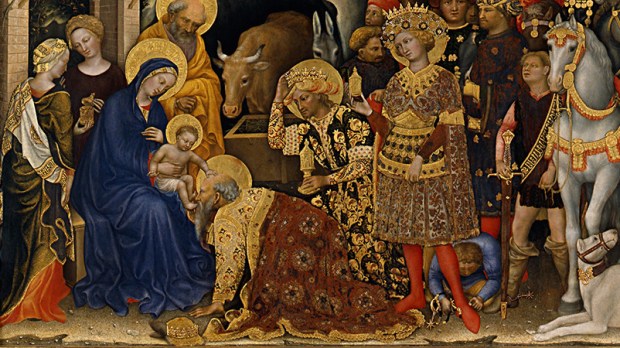The Florentine Republic was a medieval and early modern state. It had no kings; rather, it was ruled by a wealthy class of merchants and the guilds. Their enormous accumulation of wealth soon appeared in art. The “Adoration of the Magi” by Gentile da Fabriano spells one such accumulation through its extravagant opulence.
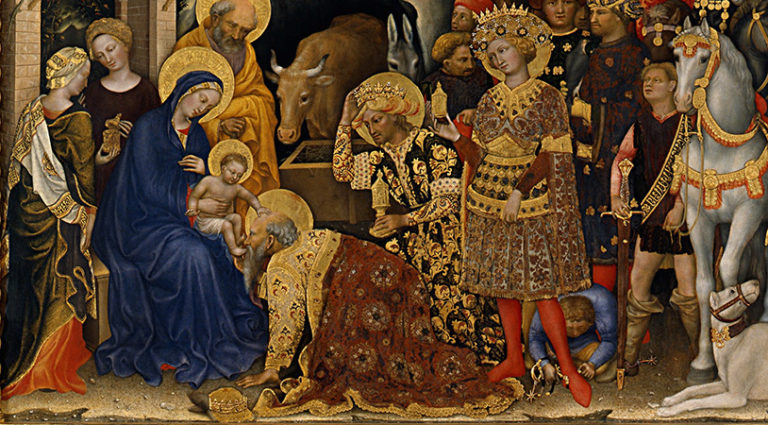
The subject is that of the famous Three Kings. Bearing gifts they traversed through distant lands in order to honour and adore the newly born Christ Child. Their adventure begins in the background. Very inventively the artist characterizes their journey as a continuous narrative through the gilded Gothic arches.
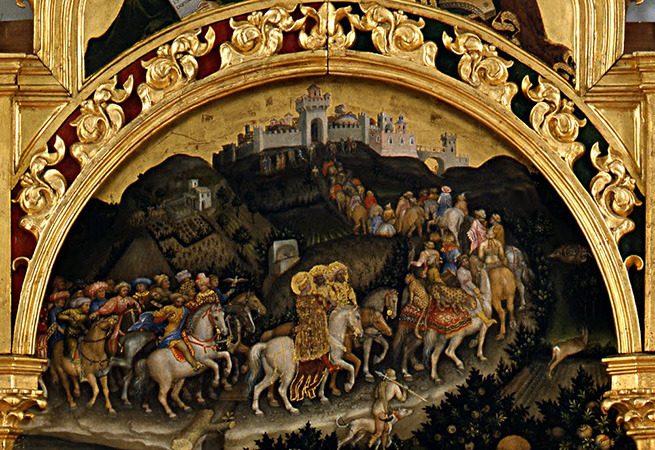
The first scene decorating the first arch depicts the discovery of the bright star in the East. The brightness of the star illuminated their hearts as they set out for Jerusalem. This is illustrated in the second scene. However, there they encounter the villain. Herod, the paranoid and treacherous king, asked them to report back once they find the Messiah. From there the Magi lead their retinue to the small town of Bethlehem as displayed at the upper right corner.
The extraordinary star shepherded them to the stable. The stupefied scene they encountered is witnessed by the viewer in the foreground of the painting. As the haloed and resplendent Christ Child greets the kings, they take turns offering gifts of gold, frankincense and myrrh. Portrayed as emissaries, each Magus is accompanied by an entourage of pages and courtiers on horses. So great is the crowd that the figures appear stacked one on top of the other as if poised on a slope.
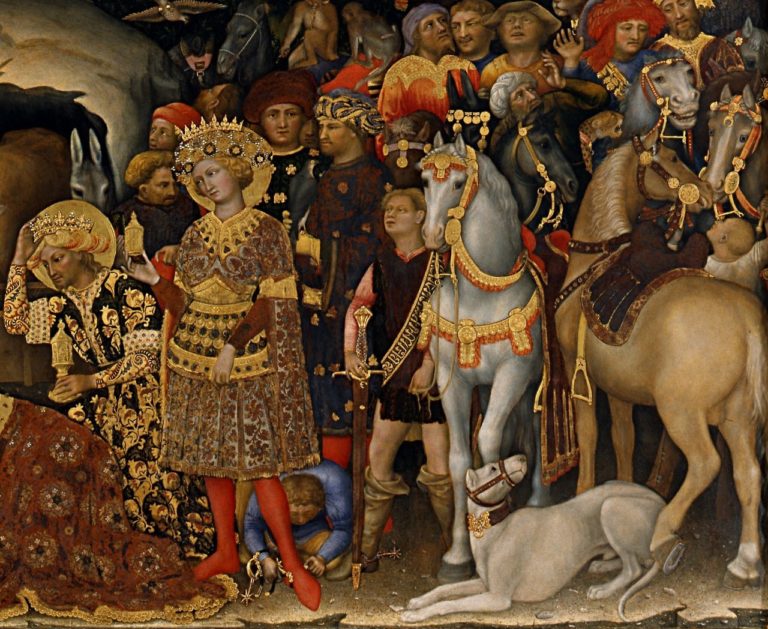
Flooded with details, the painting boasts of a rich narrative as well. Notice the attendants behind Mary as they curiously examine the first gift. Or in the right foreground, observe the royal dog that looks precariously up at the horse who is about to carelessly step onto him. Indeed intriguing are the gold anklet spurs of the third king being taken off by a squire as the Magus prepares to approach the Christ Child.
In the midst of the bustling crowd the artist has sketched the painting’s patron, Palla Strozzi. He is represented as a Magi’s courtier. His jeweled hands hold a falcon, a symbolic reference to the legacy of the Strozzi family, since the word strozzieri was a Tuscan term for “falconer.” Reminiscent of the Strozzi coat of arms, little crescents are seen decorating the horse’s bridle as well.
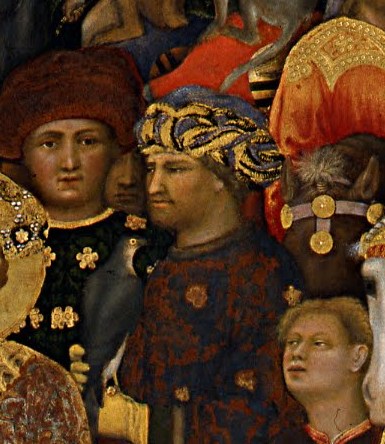
Da Fabriano’s “Adoration of the Magi” allures us not just to its gleaming artistic charm but also to its liturgical grace. The exquisite and luxurious brocaded garments of the Magi stand in stark contrast to the nakedness of the little Messiah girdled in loin cloth. And yet the Magi honor Christ as the King of Kings. Each Magus takes off his crown, bends low and kisses the Child’s playful feet. As they silently surround the Christ Child they fathom in faith the mystery of God made man. They recognized the everlasting providence of God and experience His glory in humility!
The background beams with stories as well. The chronicles include that of a traveler accosted by thieves; a riding leopard waiting in anticipation to ambush a local deer and a chained cheetah hoping to devour two exotic belligerent birds. Beautiful pomegranate and olive trees decorate the winding ways. While the pomegranate symbolizes unity and the Church, olives stand for peace and prosperity.
Joynel Fernandes is the Assistant Director of the Archdiocesan Heritage Museum, Mumbai, India. She is currently pursuing her Masters in History. Researching on Church History and Church art is her passion. She hopes to make its understanding more approachable to younger generations.
This article has been kindly granted to Aleteia by our partners in India, Indian Catholic Matters. We encourage you to visit their full website, here.
